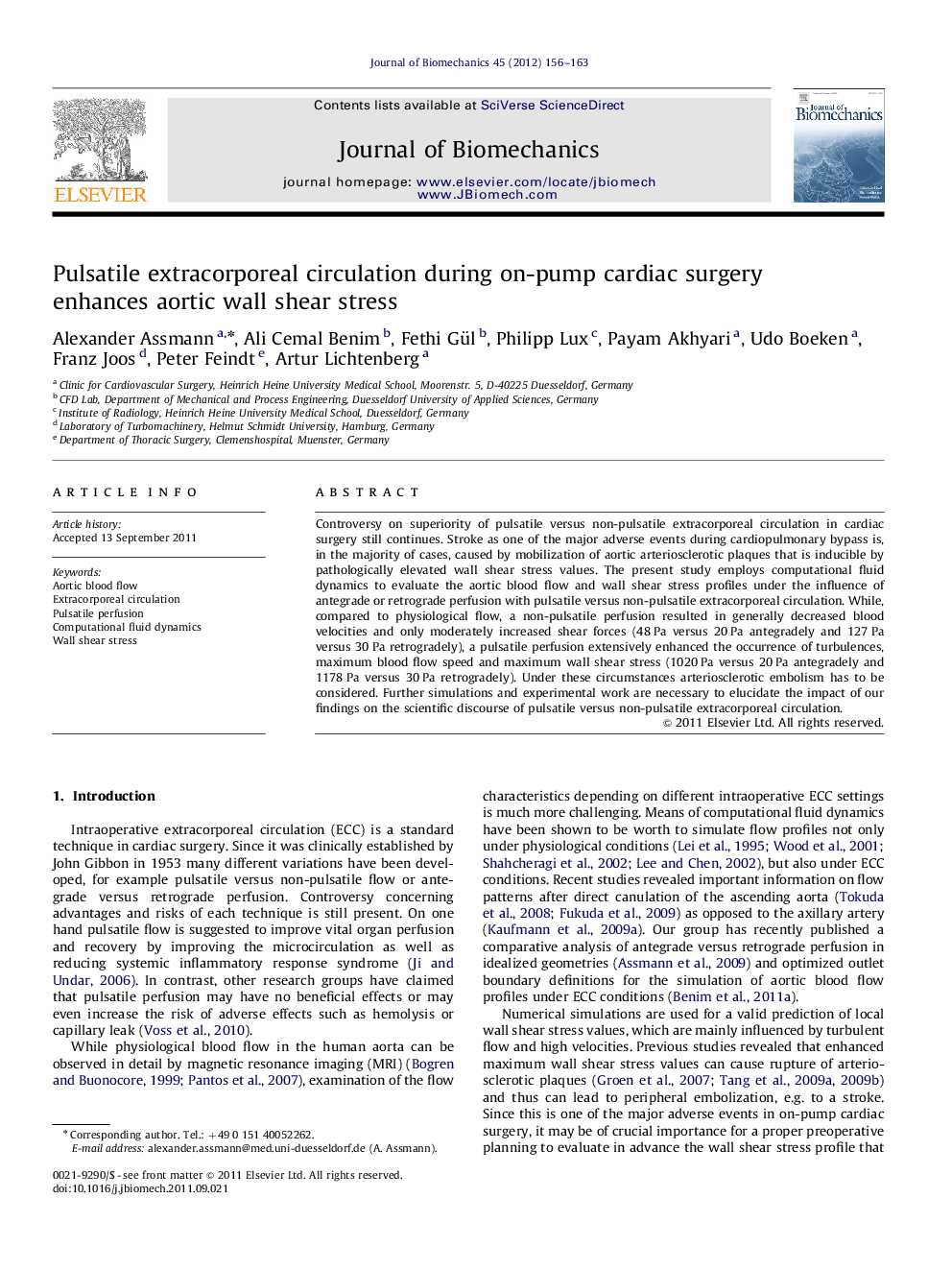| Article ID | Journal | Published Year | Pages | File Type |
|---|---|---|---|---|
| 10432544 | Journal of Biomechanics | 2012 | 8 Pages |
Abstract
Controversy on superiority of pulsatile versus non-pulsatile extracorporeal circulation in cardiac surgery still continues. Stroke as one of the major adverse events during cardiopulmonary bypass is, in the majority of cases, caused by mobilization of aortic arteriosclerotic plaques that is inducible by pathologically elevated wall shear stress values. The present study employs computational fluid dynamics to evaluate the aortic blood flow and wall shear stress profiles under the influence of antegrade or retrograde perfusion with pulsatile versus non-pulsatile extracorporeal circulation. While, compared to physiological flow, a non-pulsatile perfusion resulted in generally decreased blood velocities and only moderately increased shear forces (48Â Pa versus 20Â Pa antegradely and 127Â Pa versus 30Â Pa retrogradely), a pulsatile perfusion extensively enhanced the occurrence of turbulences, maximum blood flow speed and maximum wall shear stress (1020Â Pa versus 20Â Pa antegradely and 1178Â Pa versus 30Â Pa retrogradely). Under these circumstances arteriosclerotic embolism has to be considered. Further simulations and experimental work are necessary to elucidate the impact of our findings on the scientific discourse of pulsatile versus non-pulsatile extracorporeal circulation.
Keywords
Related Topics
Physical Sciences and Engineering
Engineering
Biomedical Engineering
Authors
Alexander Assmann, Ali Cemal Benim, Fethi Gül, Philipp Lux, Payam Akhyari, Udo Boeken, Franz Joos, Peter Feindt, Artur Lichtenberg,
